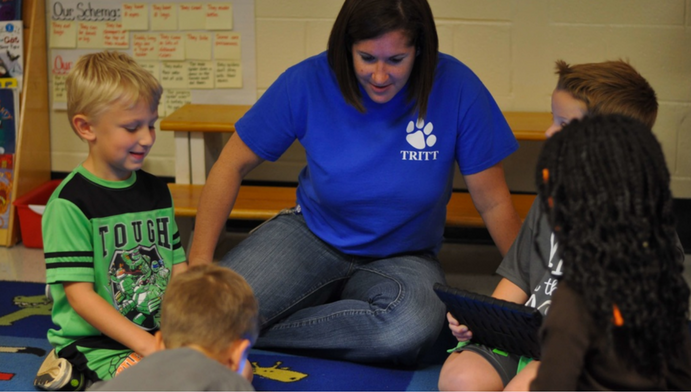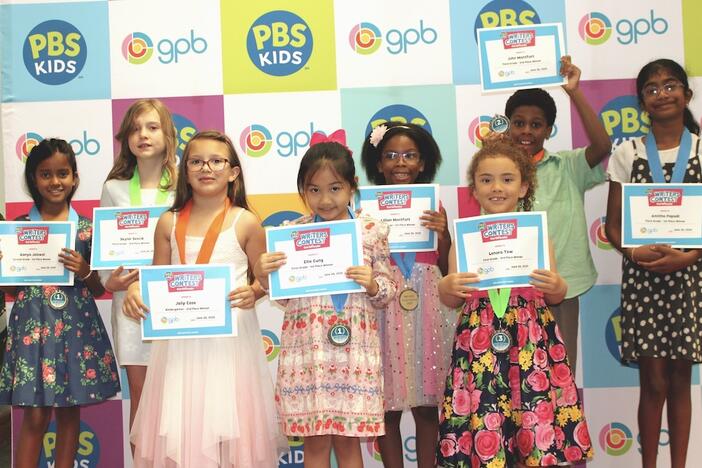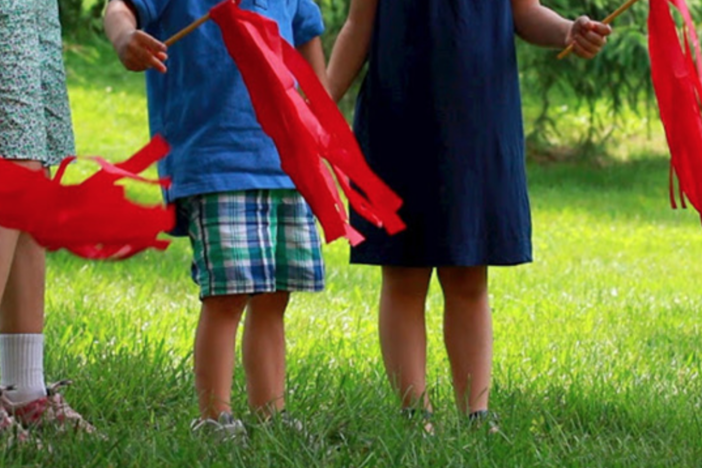
Section Branding
Header Content
Tritt Elementary's STEM Journey
Primary Content

Tritt Elementary School's STEM journey began six years ago. We use the word journey to describe the changes we’ve seen over the past six years because STEM education is a process which takes time to develop. During this journey, we’ve seen a culture change at our school, a transition away from teacher-led instruction, replaced by student-driven, inquiry-based learning. Not only have we witnessed our students changing, but we have also experienced it ourselves as educators. A successful STEM program relies on the willingness of teachers to change the way they teach, just as much as we encourage students to change the way they learn. These changes do not occur overnight. It takes out-of-the-box thinking, passion for preparing our children for the future they will face, commitment to expose our students to new possibilities, and a lot of support along the way.
At Tritt Elementary, our first year involved in STEM was meant to be slow exposure, fact-finding, and dialogue. Our administration created a team of teachers who were interested in learning more about STEM. We tried out a few lessons, read about STEM, and discussed why this would be important to engage our students in. During our second year, STEM instruction became mandatory. Each teacher was asked to complete one STEM challenge during the year. The popsicle stick structures, toothpick bridges, and marshmallow shooters were the typical Pinterest-style lessons we used to get our feet wet and to begin to feel more comfortable with STEM. The next two to three years were spent creating more engaging lessons, understanding and better applying the engineering design process, adding specialized instructors to our staff to aid in STEM integration, and an overall strengthening of our dedication to STEM education. Years five and six of this journey have been the most impressive to me. Our teachers wanted STEM challenges to be relevant, purposeful, and tied to curriculum. We began to see that STEM challenges were no longer art projects or science projects, but instead they were long term challenges which integrated math and science standards, incorporated the use of technology to create or research, and allowed students to work methodically through the stages of the engineering design process to reach their best results. Our teachers now create their own STEM challenges based on current events, grade-level standards, and student interest within the individual class. STEM is no longer an entity by itself, but rather an integration of concepts being taught in the classroom.
Our goal has never been to mold students for particular jobs; however, it is our hope that we can expose students to STEM-related job opportunities and help them think of future career options they may not have considered before. We strive to give our students the skills they need to be successful and to contribute to their community. I mentioned the transformation in the way our students think and learn. The biggest transformation we’ve seen from our students is in their ability to work together. We concentrate heavily on creating opportunities for our students to practice the 4Cs. Communication, collaboration, creativity, and critical thinking are the foundational skills that our students must master to work effectively in so many of their future career opportunities. Students have learned how to disagree without arguing, how to communicate ideas effectively, how to compromise with others, and how to solve problems in unique ways to reach desired outcomes. We are not giving our students answers, but instead we are teaching them how to find their own answers. We are giving them skills they can use to be more independent thinkers and learners, and it’s amazing to see elementary school students learn and think in this way.
After receiving county, state, and AdvancED STEM certifications, I can still say our biggest success is not an award, a plaque on the wall, a banner, or even student scores. Our biggest success comes from realizing we are preparing our students for a future that was different for the one I prepared for as a young student. Our biggest success is the confidence we have in the foundational skills we are providing for our students. Our biggest success is engaging our children in the educational culture change not only here at Tritt, but also in the world around us.
________________________________________
Alexa Dean is a guest blogger for GPB Edcuation. She has been teaching for 10 years at Tritt Elementary, with the last 3 as the Innovation Specialist. Alexa teaches product creation and coding and programming to students in grades K-5 to help them become producers of technology. She also coaches teachers to help them better embed technology use in their everyday curriculum. She's a Sphero enthusiast, a coding/programming novice, and a lover of gizmos, gadgets, and resources that help make learning more engaging.
Tritt Elementary School's STEM journey began six years ago. We use the word journey to describe the changes we’ve seen over the past six years because STEM education is a process which takes time to develop. During this journey, we’ve seen a culture change at our school, a transition away from teacher-led instruction, replaced by student-driven, inquiry-based learning. Not only have we witnessed our students changing, but we have also experienced it ourselves as educators. A successful STEM program relies on the willingness of teachers to change the way they teach, just as much as we encourage students to change the way they learn. These changes do not occur overnight. It takes out-of-the-box thinking, passion for preparing our children for the future they will face, commitment to expose our students to new possibilities, and a lot of support along the way.
At Tritt Elementary, our first year involved in STEM was meant to be slow exposure, fact-finding, and dialogue. Our administration created a team of teachers who were interested in learning more about STEM. We tried out a few lessons, read about STEM, and discussed why this would be important to engage our students in. During our second year, STEM instruction became mandatory. Each teacher was asked to complete one STEM challenge during the year. The popsicle stick structures, toothpick bridges, and marshmallow shooters were the typical Pinterest-style lessons we used to get our feet wet and to begin to feel more comfortable with STEM. The next two to three years were spent creating more engaging lessons, understanding and better applying the engineering design process, adding specialized instructors to our staff to aid in STEM integration, and an overall strengthening of our dedication to STEM education. Years five and six of this journey have been the most impressive to me. Our teachers wanted STEM challenges to be relevant, purposeful, and tied to curriculum. We began to see that STEM challenges were no longer art projects or science projects, but instead they were long term challenges which integrated math and science standards, incorporated the use of technology to create or research, and allowed students to work methodically through the stages of the engineering design process to reach their best results. Our teachers now create their own STEM challenges based on current events, grade-level standards, and student interest within the individual class. STEM is no longer an entity by itself, but rather an integration of concepts being taught in the classroom.
Our goal has never been to mold students for particular jobs; however, it is our hope that we can expose students to STEM-related job opportunities and help them think of future career options they may not have considered before. We strive to give our students the skills they need to be successful and to contribute to their community. I mentioned the transformation in the way our students think and learn. The biggest transformation we’ve seen from our students is in their ability to work together. We concentrate heavily on creating opportunities for our students to practice the 4Cs. Communication, collaboration, creativity, and critical thinking are the foundational skills that our students must master to work effectively in so many of their future career opportunities. Students have learned how to disagree without arguing, how to communicate ideas effectively, how to compromise with others, and how to solve problems in unique ways to reach desired outcomes. We are not giving our students answers, but instead we are teaching them how to find their own answers. We are giving them skills they can use to be more independent thinkers and learners, and it’s amazing to see elementary school students learn and think in this way.
After receiving county, state, and AdvancED STEM certifications, I can still say our biggest success is not an award, a plaque on the wall, a banner, or even student scores. Our biggest success comes from realizing we are preparing our students for a future that was different for the one I prepared for as a young student. Our biggest success is the confidence we have in the foundational skills we are providing for our students. Our biggest success is engaging our children in the educational culture change not only here at Tritt, but also in the world around us.
Tritt Elementary School's STEM journey began six years ago. We use the word journey to describe the changes we’ve seen over the past six years because STEM education is a process which takes time to develop.





